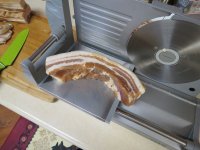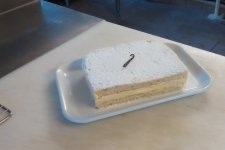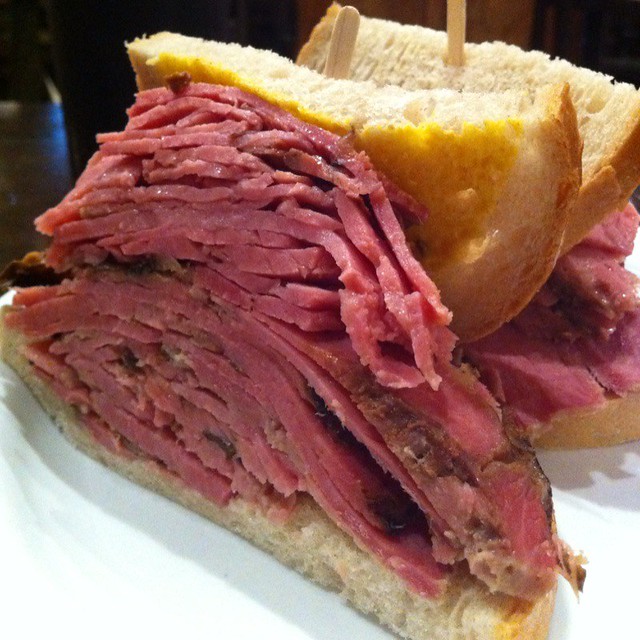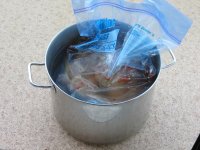w one
That must have been some cleaver.
The 1st (and 2nd) Blood Survival Edition that also saws trees and sheet ?
(had it been the middle finger tendon, I could have lived with that)
Last edited:
A typically Belgian cake, the "misérable":
So, you've got almonds, vanilla, sugar, butter, more sugar, eggs, even more sugar... and a tiny little bit of flour. 😉
Right now, there's a panforte cooling down in the kitchen... can't wait to be tomorrow.
So, you've got almonds, vanilla, sugar, butter, more sugar, eggs, even more sugar... and a tiny little bit of flour. 😉
Right now, there's a panforte cooling down in the kitchen... can't wait to be tomorrow.
Attachments
There are several "pan forte" adventures on youtube, this was a real treat in the Belmont section of the Bronx at Christmas and Easter.
Please to share the "miserable" recipe.
Please to share the "miserable" recipe.
For the biscuit part:
- flour: 20gr
- almond powder and icing sugar mix (50/50): 300gr
- eggs white: 5
- granulated sugar: 2 table spoons
- preheat the oven at 180°c
- whip the whites with the granulated sugar, very firm
- slowly and carefully incorporate the flour and the almond/sugar mix into the whites (as always the tricky part)
- put the mix on a rectangular pan, it must be about 2cm high. Sulfurized paper is absolutely necessary.
- cook for about 12 to 15 minutes at 180°c. It's not critical, it's really hard to overcook it.
- let it cool. When cooled down, cut it in two pieces (since we need it for top and bottom).
For the butter cream:
- whole milk : 100ml
- eggs yolks : 3
- granulated sugar : 100gr
- Vanilla pod : 1
- butter (best one you can get) : 200 to 250gr
- heat the milk with 50gr of sugar and the vanilla pod (make a cut into it)
- stop heating as soon as it starts boiling.
- whip the yolks with 50gr of sugar in a big bowl (it must foam a bit)
- pour the hot milk onto the yolks, whip a bit and put back on a very quiet fire.
- heat slowly while mixing constantly, it must thicken but never boils (like the usual custard).
- when thickened, remove from fire and let it cool down.
- give a few sec in the microwave to the butter. It must be slighlty soft (but not liquid). Use a fork to turn it into a cream.
- when the custard is at room temperature, incorporate the butter into it. If the butter melts, it's still too hot.
- whip the mix a bit, but carefully.
This makes for a rather thick butter cream when set, which might not be to everyone's taste. If you want it "lighter", it is possible to incorporate Italian meringue into it. The recipe makes a bit too much cream too, use about 2 third of it.
The rest is pretty much self explanatory. Almond cake on top and bottom, cream in the middle, icing sugar on top. A few hours in the fridge to set the cream is necessary but the cake is best served at room temperature. The cake must be eaten quite quickly since the yolks aren't fully cooked. The recipe easily serves 8 to 10, or even 12 light eaters.
- flour: 20gr
- almond powder and icing sugar mix (50/50): 300gr
- eggs white: 5
- granulated sugar: 2 table spoons
- preheat the oven at 180°c
- whip the whites with the granulated sugar, very firm
- slowly and carefully incorporate the flour and the almond/sugar mix into the whites (as always the tricky part)
- put the mix on a rectangular pan, it must be about 2cm high. Sulfurized paper is absolutely necessary.
- cook for about 12 to 15 minutes at 180°c. It's not critical, it's really hard to overcook it.
- let it cool. When cooled down, cut it in two pieces (since we need it for top and bottom).
For the butter cream:
- whole milk : 100ml
- eggs yolks : 3
- granulated sugar : 100gr
- Vanilla pod : 1
- butter (best one you can get) : 200 to 250gr
- heat the milk with 50gr of sugar and the vanilla pod (make a cut into it)
- stop heating as soon as it starts boiling.
- whip the yolks with 50gr of sugar in a big bowl (it must foam a bit)
- pour the hot milk onto the yolks, whip a bit and put back on a very quiet fire.
- heat slowly while mixing constantly, it must thicken but never boils (like the usual custard).
- when thickened, remove from fire and let it cool down.
- give a few sec in the microwave to the butter. It must be slighlty soft (but not liquid). Use a fork to turn it into a cream.
- when the custard is at room temperature, incorporate the butter into it. If the butter melts, it's still too hot.
- whip the mix a bit, but carefully.
This makes for a rather thick butter cream when set, which might not be to everyone's taste. If you want it "lighter", it is possible to incorporate Italian meringue into it. The recipe makes a bit too much cream too, use about 2 third of it.
The rest is pretty much self explanatory. Almond cake on top and bottom, cream in the middle, icing sugar on top. A few hours in the fridge to set the cream is necessary but the cake is best served at room temperature. The cake must be eaten quite quickly since the yolks aren't fully cooked. The recipe easily serves 8 to 10, or even 12 light eaters.
Last edited:
If you want it "lighter", it is possible to incorporate Italian meringue into it. .
It's not surprising how few Americans know that Marshmallow Fluff is just an industrial version of meringue Itallien. Very nice recipe BTW classic European "make everything from scratch", the way I run my kitchen, even in the face of lack of appreciation.
Last edited:
... the way I run my kitchen, even in the face of lack of appreciation.
I must say... cooking usually brings me a lot more appreciation at home than audio DIY 😛
There are some things though that I don't bother doing from scratch. All my attempts at pluff pastry have been worse than the best ready made commercial stuff. 😱
All my attempts at pluff pastry have been worse than the best ready made commercial stuff. 😱
I found beating the water out of the butter (If you don't have Plugra) helps a lot. The butter has to cold but malleable and you pound it with a tapered rolling pin, amazing how much moisture you get out of it.
Here (and in Belgique) one can buy butter from winter months, hay feeding, which is ideal for puff pastry. Also goes by the name hay butter.
(Cool the kitchen before starting on puff pastry dough. The patissier in the place I worked at, made his dough at early hours, despite working in the bottom kitchen, which was 3/4d sub-terrain)
(Cool the kitchen before starting on puff pastry dough. The patissier in the place I worked at, made his dough at early hours, despite working in the bottom kitchen, which was 3/4d sub-terrain)
Last edited:
Here (and in Belgique) one can buy butter from winter months, hay feeding, which is ideal for puff pastry. Also goes by the name hay butter.
(Cool the kitchen before starting on puff pastry dough. The patissier in the place I worked at, made his dough at early hours, despite working in the bottom kitchen, which was 3/4d sub-terrain)
My friends used to tap me for Pithivier made from scratch, sometimes three at a time.
I reckon that counts as a fast draw, you should make Mr Marsh some Pithiviers (hold the meat).
It's hard to tell whether the guy on the right is eating a slice of pizza, or barfing one out.
New York Times discusses sandwiches:
http://www.nytimes.com/interactive/...n-region®ion=top-news&WT.nav=top-news&_r=0
http://www.nytimes.com/interactive/...n-region®ion=top-news&WT.nav=top-news&_r=0
No mention of Montreal smoked meat, so feh... Also didn't see a lobster roll, I must be blind. 🙂
Brinig in a plastic bag ??? BTW -hot or cold smoke? Never heard of smoked turkey legs, but OTOH turkey is not native to the arctic... 🙂 Smoked cod, herring, reindeer is more natural up here...
Fiddlehead season is here, started late this year. Since they grow in shady, wet areas, I would not be surprised if some patches still have snow on them, or did until a week or so ago. On May 18 I saw a couple of patches of snow in shady areas out in the country. I also saw a plant I was not familiar with, and which apparently is edible. It is called Spring Beauty (Claytonia Caroliniana), aka "Fairy Spuds" because it has a tiny potato-like root. It is a true spring ephemeral, which exists above-ground only in the brief period between snow melt and leaf-out. By the time the forest where they grow is in full shade in June, they will drop their seeds and retreat under ground. The forest where we were hiking last weekend was full of them. Apparently they are described in some detail in the book "Stalking the Wild Asparagus".
Cal How did the turkey legs turn out?
Cal How did the turkey legs turn out?
- Home
- Member Areas
- The Lounge
- The food thread



